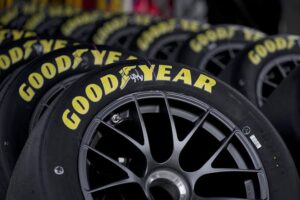|
Getting your Trinity Audio player ready...
|
Goodyear’s Incredible Journey: How patents and rubber changed everything
Painful Path to a Patent Charles Goodyear endured poverty, poor health, prison, family tragedies in quest to vulcanize rubber.
The vulcanization of rubber has often been referred to as an accidental invention. Charles Goodyear insisted that characterisation stretched the truth.
What cannot be disputed is the unflinching determination of this self-taught chemist and manufacturing engineer that led to one of the most important discoveries of the past 200 years—as well as the poverty, pain and family tragedy that are hallmarks of his story.
The first and second halves of Goodyear’s life represented such dramatically different fortunes that it’s hard to believe they involved the same person.
Promising Start
Born into a prosperous family on Dec. 29, 1800, in New Haven, Connecticut, Goodyear’s early life held promise. Descended from a founder of New Haven and raised by a successful businessman father, Goodyear inherited business acumen.
He thrived in the family business, married in 1824, and even established what was believed to be the first domestic retail hardware store in America.However, the tides turned drastically in 1829.
READ ALSO: The forgotten tale of Sarah Baartman;Hottentot Venus
The Tariff Act of 1828 led to defaults by Goodyear’s hardware buyers, coupled with his contraction of dysentery, which left him bedridden. By 1830, he was unable to pay creditors, landing him in debtors’ prison. The ensuing years brought family deaths and worsening health.
Debt and Deaths
Amid the rubber industry’s decline, Goodyear faced personal turmoil. The early 1830s saw the popularity of waterproof gum from Brazil, but its flaws in freezing winters and becoming glue-like in summers intrigued Goodyear. Despite setbacks, he initiated experiments while in prison, seeking a process to enhance rubber’s strength and durability.
After moving to Woburn, Massachusetts, in 1839, Goodyear achieved a breakthrough in vulcanization, making weatherproof rubber. Yet, his victory did not alleviate his struggles. He faced legal battles, 32 patent infringement cases, and financial hardships, being jailed for a hotel bill and losing a child.
Legal Nightmares
In 1844, Goodyear patented vulcanization, but legal challenges persisted. Attempts to increase rubber revenue in England proved futile as he lost a patent race to Thomas Hancock.

Financial woes continued despite his majestic rubber pavilions at world’s fairs. French royalties ceased, leading to another stint in debtors’ prison.By 1860, Goodyear, burdened by $200,000 in debt, faced yet another family tragedy and collapsed upon hearing of his child’s death.
He died on July 1, 1860, at 59, philosophical about not profiting from his historic invention. “I am not disposed to complain that I have planted and others have gathered the fruits,” Goodyear had said, valuing humanity’s greater good over personal gain.
Follow the Neptune Prime channel on WhatsApp: https://whatsapp.com/channel/0029Va74ZvU2v1IqKByXoX3d
Do you have breaking news, interview request, opinion, suggestion, or want your event covered? Email us at neptuneprime2233@gmail.com

